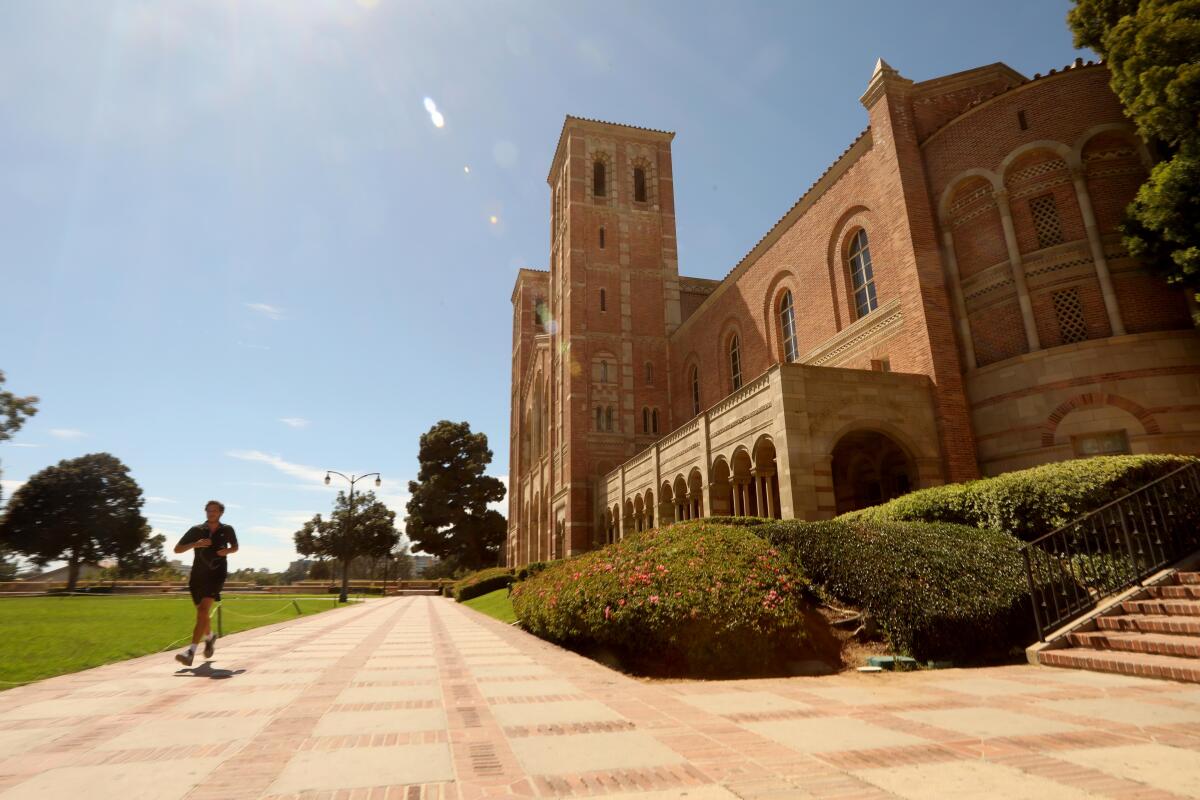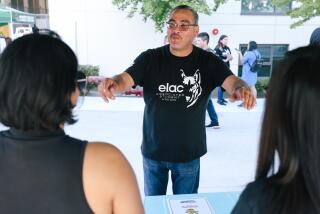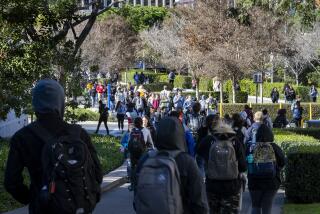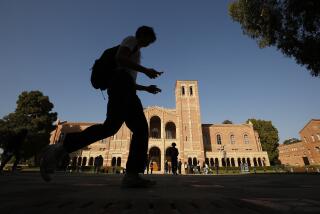‘Disheartening’ news at UCLA: Online learning will continue next quarter

- Share via
With two months left in the fall quarter, UCLA has announced that remote learning will continue in the winter quarter while other UC campuses continue to assess plans for the new year.
The university will still allow exceptions for students who must attend hybrid courses, but online instruction will remain in place when the next quarter starts on Jan. 4 and runs through March 19. Limited on-campus student housing will continue to accommodate students without alternative plans.
“I understand that this news will be disheartening to many of you, especially our new Bruins who are eager to experience life in Westwood. It is disappointing to me as well,” Executive Vice Chancellor and Provost Emily Carter said in a statement. “We were hopeful that we could expand instruction to include more in-person classes next quarter, but given the continued spread of COVID-19, and in line with strict county public health mandates, we must maintain a reduced population and limit person-to-person contact on campus.”
Los Angeles County remains under the state’s most restrictive COVID-19 safety tier, which prohibits indoor lectures and student gatherings at colleges, albeit with some exceptions. Indoor capacity could increase to 25% or 100 people, whichever is less, if the county reaches Tier 2, also known as the red tier for substantial risk of spread. But so far, L.A. County has remained stagnant in Tier 1 due to a widespread number of cases per 100,000, largely driven by younger residents.
UC Riverside, which also resides in a Tier 1 county with widespread transmission of the virus, has announced that it too will maintain limited operations during the fall semester. The university has reported 90 coronavirus cases since March within its community.
UCLA has reported more than 320 coronavirus cases among students and staff since March. Students who live off-campus in non-university-owned housing have comprised the bulk of infections within the student community. Several students who have tested positive live in on-campus housing or have visited the campus.
Similarly, USC has reported more than 500 cases since early July, due largely to off-campus activity.
USC has yet to make a decision on its plans for the spring semester. But officials on Monday reiterated that parties and large gatherings were prohibited and warned that students’ behavior over the Halloween weekend and an upcoming football game would be critical to USC’s plans for the next semester.
Up north, where most communities have more strongly mitigated the spread of the virus than Southern California’s counties, schools have more flexibility to open operations, but may still choose to take a limited approach. UC Berkeley, for example, will continue to offer a limited number of in-person classes during the spring semester and will not require any student to take an in-person class.
The start of the semester will be fully remote for at least two weeks to allow students returning to campus to quarantine for seven to 10 days.
The university resides in Alameda County, which falls in Tier 3 for moderate risk of spread. Under state rules, the university could expand indoor capacity to 50% or 200 people, and outdoor instruction to full capacity.
Nearby at Stanford University, which resides in Santa Clara County, officials are assessing whether to bring more students back in the new year. The county also falls under Tier 3, and would have the option to expand operations.
Although most California colleges have avoided major surges seen in other states where universities initially reopened en masse, higher education institutions have still emerged as a hot spot for the virus. Testing efforts and contact tracing methods have continued to expand for on- and off-campus student communities in an effort to temper the spread.
More to Read
Sign up for Essential California
The most important California stories and recommendations in your inbox every morning.
You may occasionally receive promotional content from the Los Angeles Times.











